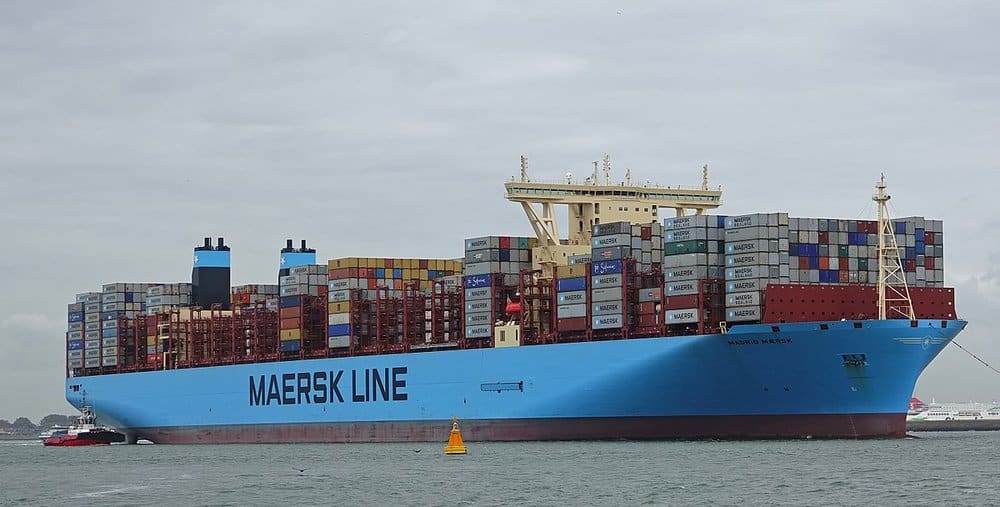
But world’s largest shipping company sees high number of risks going into 2019 with container demand expected to be down from 2018.
Maersk (Nasdaq OMX: MAER.B) saw operating profit for 2018 increase slightly despite a 26 percent jump in revenue as fuel prices continue to catch the world’s biggest container ship line by surprise.
The company sees operating profit improving this year thanks to cost savings from the buyout of Hamburg Sud and the growth in smaller, but higher margin businesses. It expects its core business of ocean freight to see slower overall growth this year than it had last year.
Maersk Chief Executive Soren Skou said macro-economic issues of the U.K. leaving the European Union, the tariff fight between the U.S. and China, and slower global economic growth will keep confronting the ocean freight industry in 2019.
Overall revenue at Maersk was up 26 percent for the year to $39 billion thanks to inclusion of results from Hamburg Sud. But operating profit for the year of $3.2 billion was up only 3 percent for the year as fuel prices rose 31 percent. It expects operating profit of $5 billion this year, which will include the effects of an accounting rule change that adds $1 billion to operating profit.
“We delivered good organic growth, “ Skou said. “We had expected better progress in operating earnings. But fuel prices increased a lot and we were not able to fully compensate for that.”
Fourth quarter revenue at Maersk rose 19 percent to $10 billion thanks to a 9.3 increase in freight rates. Rates on the China-to-U.S. West Coast trade lane was particularly strong with a 32 percent gain during the quarter thanks to the tariff-related surge in container imports into the U.S.
Overall ocean freight revenue for Maersk was up 28 percent for the year to $28.3 billion, with operating profit in the segment up 8 percent to $3 billion. Maersk said fuel prices added about $1.2 billion in operating expenses to the ocean segment.
Maersk reaped about $420 million in cost savings through the integration of Hamburg Sud. Unit costs in ocean freight were up 3.5 percent to $1,815 per forty foot equivalent unit.
Other revenue in the ocean freight segment was up 35 percent to $3.4 billion for the year. That segment includes detention and demurrage Maersk charges its customers. Thanks to the container congestion seen at U.S. ports, Maersk saw a “bit of a windfall effect in the fourth quarter that won’t last,” said Chief Operating Officer Soren Toft.
As for 2019, CEO Skou expects global container demand to increase 1 percent to 3 percent, which is below the 3.7 percent growth it saw last year. He said uncertainties facing world economy will continue to roil ocean freight.
“We see clearly economic growth that is declining,” Skou said. “We see weakness in China and Europe. Although the U.S. and China are negotiating a trade deal, we don’t believe that it will be the last of trade tensions as there are outstanding discussions between Europe and the U.S.”
Methanol investigated as shipping fuel
Dutch maritime companies plan to look at natural gas by-product in ships. (Safety4Sea)
Coal trader plans output cap
Move by world’s biggest coal trader could slow seaborne volumes. (ShippingWatch)
Hyundai Merchant Marine CEO quits
Head of troubled Korean container line had been expected to stay through 2021.
Trade group lashes out at European Commission on scrubber stance
Clean Shipping Alliance 2020 said scrubber bans not based on science. (BunkerWorld)










